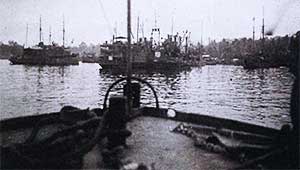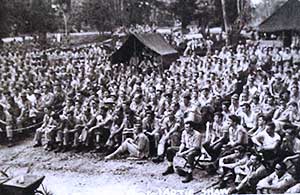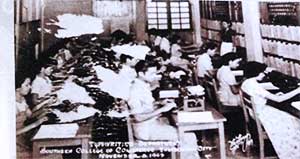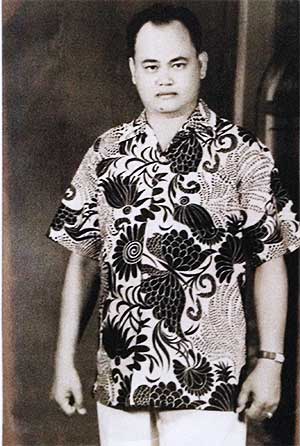History
Prior to the creation of the SOUTHERN CITY COLLEGES (SCC), despite the lack of facilities in warn-torn Philippines, a man with keen vision for progress initiated as early as May 9, 1946, the offering of vocational courses at a building shack on the old Bailen Street, now La Purisima St.. This man is Mr. Francisco M. Caliolio of Tarlac, a transient in this city who was in search of greener pastures and better place to live in.
Mr. Caliolio had seen the need for technical training by providing technical opportunities for those who need them, thus enrollment in Typewriting, Stenography, and Bookkeeping is a year round schedule. Because of the six-month duration of the course, many enrolled at the SOUTHERN ACADEMY. There was only one typewriter, (a Remington). Mr. Caliolio was the only teacher in all three subjects. Not long after, a course in Hair Culture was added, and his wife, Mrs. Araceli Ferrer Caliolio joined him.
In 1952, Mr. Caliolio applied to the Bureau of Private School in Manila, for a two-year Commercial course and a one-year Secretarial Science course. Upon approval of the new courses, the SOUTHERN ACADEMY was changed to SOUTHERN COLLEGE OF COMMERCE. The students were housed at the Luy Kim Guan Building at Madrid Street, now N. and Valderosa Street. On June 11, 1956, the four-year Commerce course, one-year Secretarial Science, Vocational courses in Typewriting, Stenography and Bookkeeping together with the First and Second year of the Business Secondary (Day) were granted government recognition. Thereafter, the yearly recognition of the various courses like the Third and Fourth Years of the Business Secondary (Day), the Business Secondary (Night), and the four-year Academic Secondary (Day).
Not contented with the courses being offered, in 1962, the school applied for additional collegiate courses like the four-year Liberal Arts (A.B.), two-year Collegiate Secretarial Science (CSS), four-year Commercial Education (B.S. Com. Ed.), and the four-year Education (B.S.E). At this point in time, the SOUTHERN COLLEGE OF COMMERCE was renamed the SOUTHERN CITY COLLEGES. But whether as Southern City College of Commerce or as Southern City Colleges - the school continues to gain the continuing patronage and support of its students, their parents, and the community in general.
The College of Commerce, with majors in Accounting and Banking & Finance, as the primer and core of all the college departments, has produced CPA's with sterling character that would help raise the standard of the accounting profession and thus give credit to their own country and calling.
However, in consonance with P.D. 692, known as "The Revised Accountancy Law", DECS Order No. 5, in 1990, which required school colleges and universities to gradually phase out the accounting major in the Bachelor of Science in Accounting. In May 1990, the school applied for the new course where the school was given government recognition to offer the B.S. in Accountancy in July 1990, effective school year 1990-1991. The B.S. in Commerce, aside from the original Banking and Finance major, additional majors in Marketing, Management and Accounting Technology have been added.
∞∞∞
Once upon a Time...a boy with a Dream in his Heart
Once upon a time, a boy was destined to be the founder of a school that would serve as a seedbed of great men and women...as school that would lift young people's hopes...and make their dreams come true...That boy was Francisco M. Caliolio.
The year was 1941. The World War II broke out, which had plunged the young Francis to Zamboanga City. He was from Tarlac, and came to the city, with NOTHING, except that one day he is going to help the residents of this city. To survive a day, Francis had to work.
He practically did everything, and anything to make both ends meet, for daily survival. He worked as a laborer at the wharf, and at  the same time, lived his life as a boxer, trained by his foreman (Kapatas). In fact it was because of boxing that the young Francis finished his college. He also worked at the Malangas Coal Mining under the Japanese administration.
the same time, lived his life as a boxer, trained by his foreman (Kapatas). In fact it was because of boxing that the young Francis finished his college. He also worked at the Malangas Coal Mining under the Japanese administration.
Later, he worked at the Zamboanga International Copra Corporation as cashier. It was on May 9, 1946, after the World War II,  which had devastated lives and properties in Zamboanga City that made Francis decide to establish a school to help alleviate the lives of the poor Zamboangueños. The war left the ravaged city helpless and hopeless. The Zamboangueños did not know how to start a new with their lives, and move on after the war had shattered their dreams and aspirations.
which had devastated lives and properties in Zamboanga City that made Francis decide to establish a school to help alleviate the lives of the poor Zamboangueños. The war left the ravaged city helpless and hopeless. The Zamboangueños did not know how to start a new with their lives, and move on after the war had shattered their dreams and aspirations.
Sir Francis' wife, Araceli Dizon Ferrer-Caliolio, opened the first parlor in this city and savings which started the humble Nipa hut school, and used the Remington brand typewriter for the Stenography class. His first graduated became his first hired teacher. The Remington typewriter kicked off the creation of the school.
The school was first situated on the old Bailen Street, now La Purisima Street. This was later, relocated at the Luy  Kim Guan Building at Madrid Street, now N.S. Valderosa Street.
Kim Guan Building at Madrid Street, now N.S. Valderosa Street.
As an employer, and president, Sir Francis was so understanding and patiend in dealing with this staff. He considered everyone as part of his FAMILY. He was inspired by the Loyalty Poem authored by Albert Hubbard, which had served as his guiding principle, and for his employees and students.
∞∞∞
The Loyalty Poem
If you work for a man
in heaven's name work for him
speak well of him
and stand by the institution which he represents
Remember, an ounce of loyalty
is worth a pound of cleverness
if you must growl, condemn
and eternally find fault
resign from your position
and when you are on the outside
damn to your heart's content
but as long as you are part of the
institution
do not condemn it
If you do, the first high wind that
comes along
will blow you away, and probably
you will never know why
-Albert Hubbard
∞∞∞
